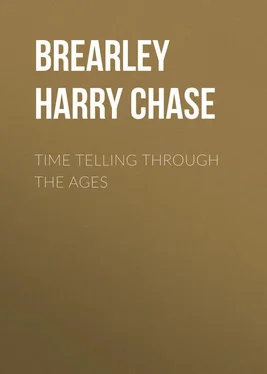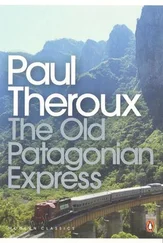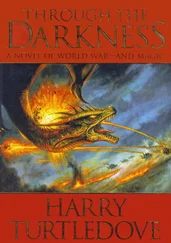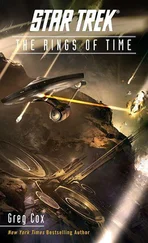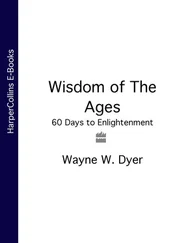Harry Brearley - Time Telling through the Ages
Здесь есть возможность читать онлайн «Harry Brearley - Time Telling through the Ages» — ознакомительный отрывок электронной книги совершенно бесплатно, а после прочтения отрывка купить полную версию. В некоторых случаях можно слушать аудио, скачать через торрент в формате fb2 и присутствует краткое содержание. Жанр: foreign_antique, foreign_prose, на английском языке. Описание произведения, (предисловие) а так же отзывы посетителей доступны на портале библиотеки ЛибКат.
- Название:Time Telling through the Ages
- Автор:
- Жанр:
- Год:неизвестен
- ISBN:нет данных
- Рейтинг книги:4 / 5. Голосов: 1
-
Избранное:Добавить в избранное
- Отзывы:
-
Ваша оценка:
- 80
- 1
- 2
- 3
- 4
- 5
Time Telling through the Ages: краткое содержание, описание и аннотация
Предлагаем к чтению аннотацию, описание, краткое содержание или предисловие (зависит от того, что написал сам автор книги «Time Telling through the Ages»). Если вы не нашли необходимую информацию о книге — напишите в комментариях, мы постараемся отыскать её.
Time Telling through the Ages — читать онлайн ознакомительный отрывок
Ниже представлен текст книги, разбитый по страницам. Система сохранения места последней прочитанной страницы, позволяет с удобством читать онлайн бесплатно книгу «Time Telling through the Ages», без необходимости каждый раз заново искать на чём Вы остановились. Поставьте закладку, и сможете в любой момент перейти на страницу, на которой закончили чтение.
Интервал:
Закладка:
But here again we have run somewhat ahead of our story which, as a matter of fact, had only reached the point of primitive sun-dials. But this anticipation will be excused because of the importance of emphasizing that the growing interdependence of human relations had made it necessary to take into account the convenience of a greater and greater number of people, and this involved closer and closer time-recording in smaller divisions of time by more exact methods.
The sun-dial underwent so many changes that a volume would be needed to describe them all. For example, it was found that the shadow of an upright stick or stone varied from day to day, because, as we have already noticed, the sun rises farther north in summer in the northern hemisphere than it does in winter. So the mark for a certain hour would change as the season changed, and the dial would not indicate time accurately.
Berosus, a Chaldean historian and priest of Bel, or Baal, a god of the old Babylonian, lived about the year 250 B. C., and hit upon a very ingenious way of solving this difficulty. He made the dial hollow like the inside of a bowl. Into this the shadow was cast by a little round ball or bead at the end of a pointer that stood horizontally out over the bowl.
Now the sky itself is like a great bowl or inverted hemisphere, and, howsoever the sun moved upon it, the shadow would move in the same way upon the inside of the bowl or hemisphere. And by drawing lines in the bowl, similar to the lines of longitude upon the map, the hours could be correctly measured. The "Hemicycle of Berosus," as it was called, remained in use for centuries and was the favorite form of sun-dial all through the classic period of Greece and Rome. Cicero had one at his villa near Tusculum, and one was found, in 1762, at Pompeii.
But the hemicycle was not easy to make unless it were fairly small, and, if small, it was not very easy to read. You can see that a shadow which traveled only a few inches in a whole day would move so slowly that one could hardly see it go. And the shadow of a round ball is not a clear sharp-pointed thing like the hand of a watch, whose exact position can be seen however small it may be. Besides, the ancients were not very particular about exact timekeeping. They had no trains to catch, and in their leisurely lives convenience counted for more than doing things "on the minute." So they still continued using the upright pointer which the Greeks called the gnomon , meaning "the one who knows."
"Cleopatra's Needle," and other Egyptian obelisks may also have been used as huge gnomons to cast their shadows upon mammoth dials, for they were dedicated to the sun. With an object of such great size the shadow would move rapidly enough to be followed easily by the eye. But of course its motion would be irregular because of the flat surface of the dial. The word "dial," by the way, comes from the Latin dies meaning "day," because it determined the divisions of the day.
Then there was applied the idea of making the shadow move over a hollow space, such as a walled courtyard, going down one side, across, and up the other side as the sun went up, across and down the sky. Sometimes light was used instead of shadow, the place being partially roofed over and a single beam of light being admitted through a small hole at the southern end. Men kept track of the motion of this beam as it touched one point after another during the day.
Do you remember the miracle of the dial of Ahaz, mentioned in the Bible? Hezekiah the king was sick and despondent, and would not believe that he could ever recover from his illness or prevail against his enemies. So the prophet, Isaiah, in an effort to comfort the royal sufferer, made the shadow return backward ten degrees upon the dial of Ahaz, as a sign from heaven that his prophecy of the king's future recovery was true. You will find the story in Isaiah, Chapter thirty-eight.
This dial of Ahaz was probably a curved flight of steps rising like the side of a huge bowl at one end of the palace courtyard, with either a shadow cast by a pointer overhead or a beam of light admitted through an opening. It can be seen that this and similar great dials were applications of the hemicycle idea on a large scale.
According to our chronology, the dial of Ahaz must have been built during the eighth century, B. C. Although the sun-dial period was, of course, many hundreds of years older than this, yet the story of this Hebrew king and prophet is the first authentic reference to a sun-dial which has been discovered.
However, the final improvement of the dial was made when it was discovered that by slanting the pointer, or gnomon, exactly toward the north pole of the sky – the point where the north star appears at night – the sun's shadow could be cast upon a flat surface with accurate results in indicating time.
This may sound simple, but if you will look at a sun-dial such as may still be found in gardens, you will see that the lines of the hours and minutes are laid out on certain carefully calculated angles; you will realize that people had to acquire considerable knowledge before they were capable of making such calculations. The whole subject of dial-making is so complicated that, in 1612, there was published a big book of eight hundred pages on the subject.
The angles of the lines of the sun-dial must be different for different latitudes. It took that strong-arm race of ancient times, the Romans, a hundred years to learn this fact. The Romans, at this time, were developing their civilization from the shoulders downward, while the Greeks and some of the Greek colonies developed theirs from the shoulders upward. Rome was a burly power, with powerful military muscles. Whatever it wanted it went out and took at the point of the sword, as some nations have endeavored to do in latter days. Thus, the city of Rome became a vast storehouse of miscellaneous loot – the fruit of other men's brains and hands.
Some conqueror of that day took back with him a sun-dial from the Greek colony of Sicily. This was set up in Rome, where nobody realized that even the power of Rome's armies was not able to transplant the angle of the sun as it shone upon Sicily far to the southward. It was nearly one hundred years before these self-satisfied robbers found that they had been getting the wrong time-record from the stolen instrument. Thus, the original owners had a form of belated revenge, could they but have known it.
One of the largest of all the sun-dials was the one set up by the Roman Emperor Augustus when he returned from his Egyptian wars bringing with him an obelisk not unlike the one which now stands near the Metropolitan Museum of Art in Central Park, New York City. If you can imagine this Egyptian obelisk, with its strange hieroglyphic characters upon its four sides, surrounded by a great dial with the figures of the hours marked upon its surface, you will get an idea of the size of this huge timepiece. However, it was probably more picturesque than valuable as a time-keeper.
There is an important difference between clocks and sun-dials, aside from the self-evident one of the difference in their construction. Clock-time is based on what is called "mean time." If we study the almanac table of times of sunrises and sunsets, and count the number of hours from sunrise of one day to sunrise of the next, we find it is rarely exactly twenty-four hours, but usually a few minutes more or less, while the average for the whole year is twenty-four hours. The clock is constructed to keep uniform time based on this average length of day.
The sun-dial time marks "apparent time," the actual varying length of each day. The sun-dial time, therefore, is nearly always some minutes ahead or behind that of a clock, the greatest discrepancy being about sixteen minutes for a few days in November. There are, however, four days in the year when the clock and the sun-dial agree perfectly in the time they indicate. These days are April 15th, June 15th, September 1st, and December 24th.
Читать дальшеИнтервал:
Закладка:
Похожие книги на «Time Telling through the Ages»
Представляем Вашему вниманию похожие книги на «Time Telling through the Ages» списком для выбора. Мы отобрали схожую по названию и смыслу литературу в надежде предоставить читателям больше вариантов отыскать новые, интересные, ещё непрочитанные произведения.
Обсуждение, отзывы о книге «Time Telling through the Ages» и просто собственные мнения читателей. Оставьте ваши комментарии, напишите, что Вы думаете о произведении, его смысле или главных героях. Укажите что конкретно понравилось, а что нет, и почему Вы так считаете.
